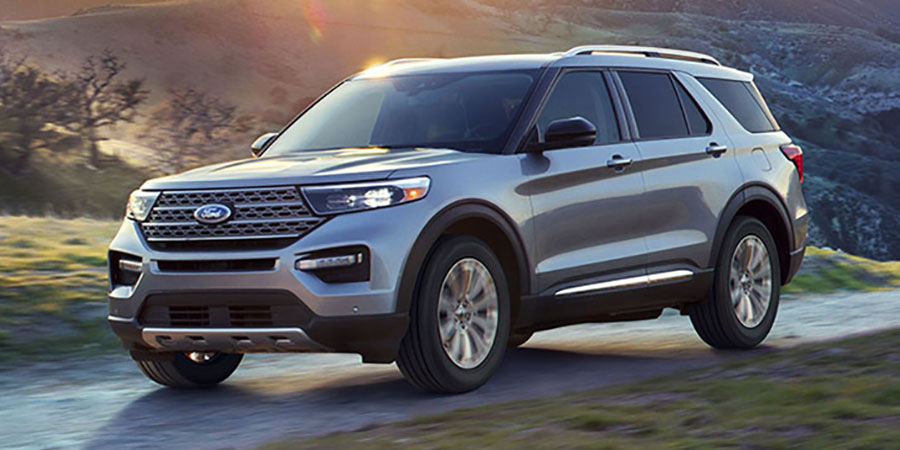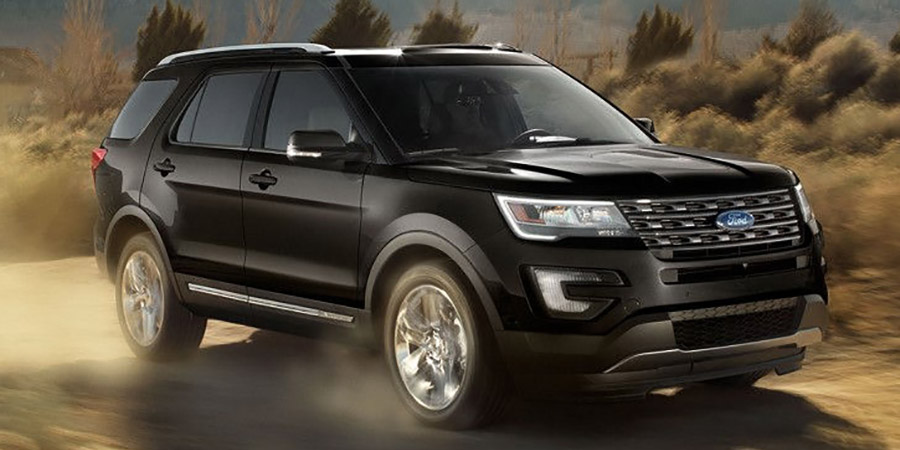The used Ford Explorer is a favorite among families, especially families with a thirst for adventure. These three-row midsize crossover SUVs are known for their blend of rich interior comfort and sporty capabilities. Our used buying guide takes a look at how the Explorer has changed in recent generations, so you’ll have a better idea of what you’re getting into as you browse used offerings.
Sixth Generation: 2020-Current Model

The modern Explorer is home to six or seven passenger seats, depending on whether it includes second-row captain’s chairs or a second-row bench seat. With nine trim levels available, you can select the amount of luxury (with upgrades like leather upholstery and heated and ventilated front seats) you crave.
Compared to previous versions of this midsize crossover, these Explorers offer a uniquely sporty performance. They revive the rear-wheel-drive platform of the original Explorer SUV, which lends itself to more on-road fun and even greater towing capabilities (max 5,600 pounds). However, they also stick to the modern unibody design, which is more like a car than the truck-like body-on-frame design of old. With standard rear-wheel drive and a car-style chassis, these Explorers are both very sporty and easy to handle, much more so than competitors.
Here are the most important changes Ford made to this generation of Explorers, listed according to model year:
- The 2022 Ford Explorer introduced the ST-Line trim model, which features the ST’s stylish upgrades without the extra performance gear. The ST model became available with rear-wheel drive, though it still came standard with all-wheel drive.
- For the 2021 model year, the hybrid powertrain became available for the Platinum trim model. A new trim model, the trail-friendly Timberline, debuted.
Fifth Generation: 2011-2019

Unlike current models, these Explorers come standard with front-wheel drive. But they were the first to feature a car-like crossover chassis, making them easier to handle than the truck-style SUVs of the previous generation. Inside, you’ll enjoy high-class comfort, with roomy seating and available upgrades like dual-zone automatic climate control and leather upholstery.
These models changed quite a bit over the years. Here’s a look at all of the important alterations, according to model year:
- The 2018 Explorers introduced a 4G LTE Wi-Fi hotspot, as well as new front and rear exterior styling.
- For 2017, Ford introduces its new SYNC 3 infotainment system, discontinuing the old MyFord Touch system.
- The 2016 models featured a mid-cycle refresh, which meant new exterior and interior styling, revised suspension tuning, and updated safety systems. The Platinum trim model debuted, becoming the most luxurious option. And a new 2.3-liter turbocharged four-cylinder engine replaced the 2.0-liter four-cylinder engine, delivering more power. This new engine was available with all-wheel drive, unlike the outgoing engine.
- Automatic headlights became standard for the 2014 model year. Heated second-row seats became standard for the Limited trim level.
- For 2013, the Explorer introduced a peppy new Sport trim model. The Limited model was available with more features, including an available heated steering wheel, lane-keeping assist, and lane-departure warning. A front passenger knee airbag became standard for all models. And Explorers with xenon headlights now included automatic high beams.
- The 2012 Explorer introduced its first EcoBoost engine, a turbocharged four-cylinder engine that was designed to better balance speed with efficiency.